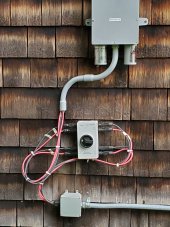robby
Photon Vampire
- Joined
- May 1, 2021
- Messages
- 4,142
The Central Hub or Inverter is not controlling the Battery in terms of shutting it down.I keep mine separate, with no communication.
If five devices all communicate with the same central "hub", then in my mind, I have no redundancy structures. If all five devices are separately monitoring voltage, current, etc, then I would consider that to a level of monitoring redundancy.
I know a lot of Inverters don't seem to have Max Current Discharge feature but others like Sol-Ark do and they gather this information automatically from the batteries if they are supported by Sol-Arks Comm system and the data is confirmed constantly. If you batteries are not closed loop supported then you have to manually stick in the Packs total Rating and hope for the best.
In your 5 battery scenario if you are 95% maxing out the five batteries and one happens to fail (Blown fuse etc) then the other four will surely fail within a second or two with either Blown fuses or a blown BMS.
In a proper closed loop system the minute one battery fails the Inverter immediately knows this and will limit it's current draw to the Max allowable from the other 4 so that they are never at 100% and being destroyed. This may result in the Inverter drawing more grid power or in off grid system the Inverter starting the Generator and one minute later connecting the load again to see if the Inverter can now handle it. Worst case is that it just trips out the Inverter and it will keep retrying every minute to see if the load is manageable with just 4 batteries.
This is just one example of closed loop in action.



